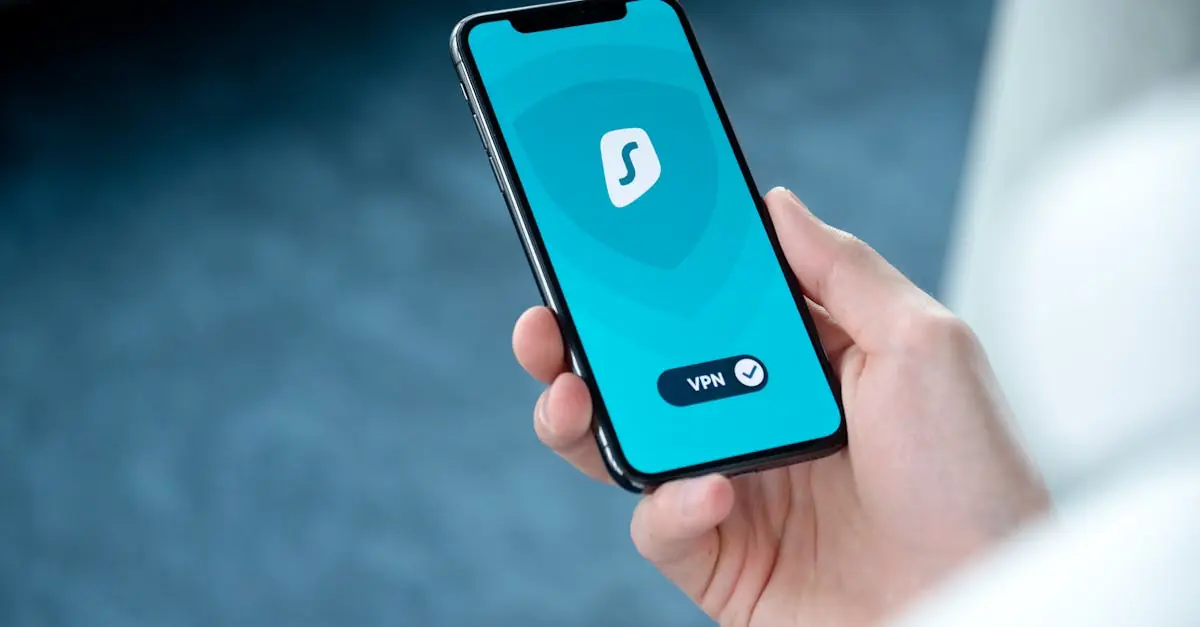Ever found yourself in the mysterious depths of private browsing mode on your iPhone, feeling like a digital ninja? While it’s great for keeping secrets and avoiding prying eyes, eventually, everyone needs to come back to reality—or at least to their regular browsing habits. If you’re scratching your head and wondering how to exit this stealthy mode, you’re not alone.
Table of Contents
ToggleUnderstanding Private Browsing Mode
Private browsing mode on an iPhone offers users an enhanced layer of privacy. It helps prevent websites from storing information about browsing sessions. In this mode, Safari doesn’t save your browsing history, search history, or autofill information. Private browsing creates a more secure experience, especially when using shared or public devices.
Users might find private browsing useful in various situations, such as making purchases without leaving traces or searching sensitive information. While advantages exist, limitations accompany this mode. For instance, it doesn’t protect against all forms of tracking, such as tracking by internet service providers or even certain websites.
Exiting private browsing mode becomes essential when users prefer to resume normal browsing. Switching back allows easy access to previously saved passwords, favorite websites, and browsing history. Most importantly, understanding these aspects enhances the browsing experience on iPhones, as users can make informed choices about their online activities.
Additionally, private browsing mode often lacks some features available in regular browsing modes. Users won’t see saved tabs or bookmarks while in this mode. Recognizing these distinctions ensures users understand their current online environment, enabling effective usage of their device.
Breaching the comfort of private browsing might feel daunting at first. With simple steps, users can quickly exit and return to a more conventional browsing experience. Maintaining awareness of how to navigate between these modes optimizes the overall functionality of Safari on the iPhone.
How To Identify If You Are In Private Browsing Mode
Identifying private browsing mode on an iPhone is straightforward. Users can look for specific indicators within Safari and other browsers.
Checking Safari Settings
Safari displays a distinct visual cue when in private browsing mode. The address bar appears dark instead of the usual light color. Users also notice a message stating “Private” in the middle of the screen. To verify this mode, follow these steps: Open Safari, look at the address bar for its color change, and check for the “Private” label. If these indicators are present, it confirms that browsing activities are private.
Using Other Browsers
Other browsers like Chrome or Firefox adopt similar strategies. In Chrome, the background turns dark when private mode is activated. Firefox shows a private browsing message along with a different layout. Users can quickly identify their status by observing the color scheme and notification prompts. Access the settings or open a new tab to confirm the mode. Recognizing these differences aids users in managing their browsing preferences effectively.
Steps To Exit Private Browsing Mode
Exiting private browsing mode ensures users return to their regular browsing experience. Below are steps for exiting in different browsers.
Exiting In Safari
To exit private browsing mode in Safari, first locate the tabs icon at the bottom right of the screen. Tapping this icon displays all open tabs. Users should then look for the “Private” label, which indicates private browsing is active. Tap on “Private” to switch back to regular browsing mode. This action will close all private tabs, restoring normal functionality and access to saved passwords and browsing history.
Exiting In Other Browsers
In browsers like Chrome or Firefox, users can exit private mode by tapping the tabs icon. Users will see an option for “Incognito” in Chrome or “Private” in Firefox. Selecting this switches back to regular browsing mode. Ensure to close all private tabs to fully exit private browsing. The regular interface allows users to access bookmarks and saved information, enhancing their browsing efficiency.
Tips For Using Private Browsing Mode Efficiently
Enable private browsing to enhance privacy when using an iPhone. This mode prevents websites from tracking search history and storing personal data. To maximize its benefits, only use it for sensitive searches or transactions.
Stay mindful of limitations. Private browsing doesn’t protect against tracking from internet service providers or sophisticated websites. Awareness of these limitations helps users maintain realistic expectations about privacy.
Utilize bookmarks wisely. While private browsing doesn’t save bookmarks, users can copy essential links before entering the mode. This method ensures access to important sites without the risk of unwanted storage.
Explore the browser settings periodically. Sometimes browser updates include enhancements for private browsing. Staying updated ensures users benefit from the latest privacy features.
Close tabs effectively. Exiting private browsing mode requires users to close all open private tabs. This action not only secures personal information but also restores access to saved data and browsing history.
Bookmark this process for efficiency. Remembering how to toggle between modes saves time and minimizes confusion. Familiarity with exiting private browsing leads to a smoother transition back to regular browsing habits.
Engage with incognito mode in other browsers, such as Chrome or Firefox, to identify distinct features. Each browser offers unique ways to enhance privacy, so exploring these options enriches the user experience.
Practice caution with autofill settings. Even in private browsing mode, autofill can sometimes enter data automatically. Adjusting these settings can prevent accidental data entry during private browsing sessions.
Exiting private browsing mode on an iPhone is a straightforward process that brings users back to their regular browsing habits. By understanding the visual cues and following simple steps, users can easily transition from private mode while ensuring they regain access to saved information and browsing history.
Being aware of the limitations of private browsing is essential for managing online privacy effectively. With the right approach users can enjoy the benefits of both private and regular browsing modes, enhancing their overall online experience. Embracing these practices allows for smarter and safer internet usage, ensuring that privacy needs are met without sacrificing convenience.



